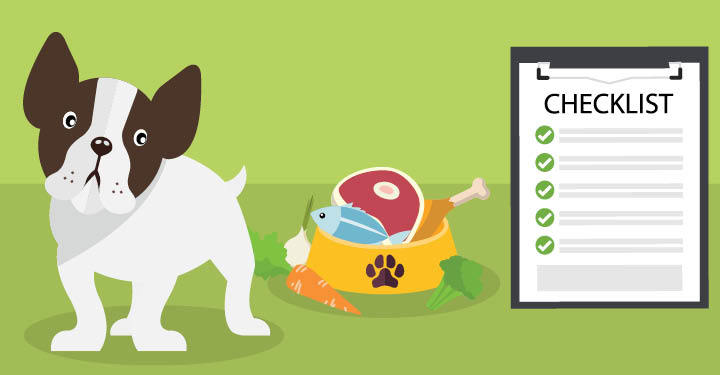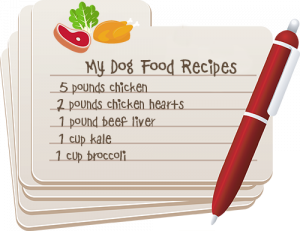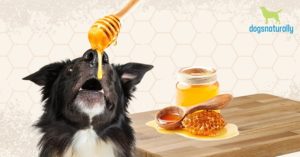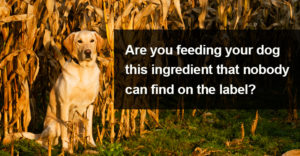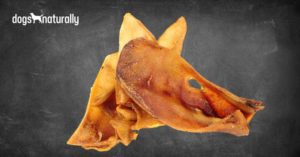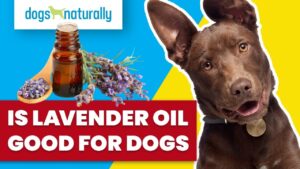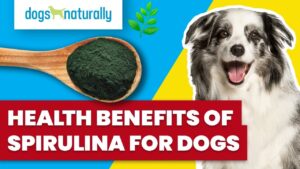Deciding what to feed your dog – or anyone in your care for that matter – isn’t something you should take lightly. Apart from exercise and mental health, diet is the biggest contributor to wellbeing. Feeding a healthy dog food is really important.
The eating habits we set up can mean the difference between a long and healthy life and programming our loved ones for failure. I’d like to share with you some of the most important principles that I apply in pursuit of the perfect canine diet.
I lead by example; all three of my dogs are lean, healthy and energy filled cuddle-monsters. My aim is to inspire you to produce your own dog’s meals.
If you’re happy with the current food you’re feeding, then incorporating even some of these suggestions will benefit your dog.
Remember, it doesn’t have to be all or nothing. Do what you can, when you can. Some change is better than no change.
Here are my top 15 tips to improve your dog’s diet today…
1. Discard the marketing hype and take the label test
No matter how entertaining, relying on advertisements for nutritional information is not ideal.
Why? Because the people that produce the ads didn’t formulate the food. Their job is to make even the worst products appear healthy.
Carefully examining the labels on your dog’s food and treats will help you make more informed purchases.
Product labels always list the ingredients in order, from the largest to the smallest.
Google-search each of the first five ingredients. First, type in each ingredient followed by “bad for dogs” and then “good for dogs.” The results may surprise you. When you start researching, you’ll soon see why I’m against prescription foods sold by vets.
They may suit a diagnosed condition but can cause many other problems (and that’s not even taking into account the cooking processes or packaging).
Discuss the ingredients with the person or company recommending the products. If they can’t explain what each ingredient is, its source, why and how it’s good for dogs, then rely on your own research and judgment.
2. Avoid feeding shelf-stable foods as a staple diet
Thanks to clever marketing, the average consumer often overlooks the alarming reasons why processed food has a 12 to 24 month shelf life.
Marketing has conditioned us to believe that shelf-stable foods provide everything dogs need to live long and healthy lives.
Actually, the opposite is true. While there will always be the rare exception to the rule, don’t count on your dog being one of them.
Shelf-stable products have no live enzymes due to their industrial cooking processes.
They’re dead foods that rely on synthetic supplementation to meet the supposedly “balanced” nutritional standards set out by AAFCO.
My gripe with these products is not that they exist, but the way they’re marketed … as a staple, daily diet.
After all, if we could pack all the nutrition the body needs for optimum health into a pellet or a can, then there would be thousands of companies out there producing human “food” and promoting it as a staple diet.
Biscuits, kibble and canned foods have their place – in shelters, charities, on long trips, or on occasions when we’re pressed for time – but they should not be fed as a staple diet.
3. Introduce fresh whole foods
Fresh whole foods such as vegetables and fruit are full of live enzymes and will add a new dimension to your dog’s health.
Whole foods are also full of fiber, which aids digestion, encourages pooping and improves stools.
Many of the nutrients are destroyed by the cooking processes that create shelf-stable foods. So the manufacturers add synthetic nutrients back into the products.
These nutrients are synthetic imitations of those found in nature … and this is the vast difference between whole foods and industrially-produced foods.
Unlike most synthetic nutrients, whole foods contain nutritional co-factors that work synergistically to help the body absorb, assimilate and make use of nutrients.
You are not simply what you eat, but more importantly, you are what you can absorb.
Do your own research on safe whole foods for dogs.
There are certain fruits and vegetables that dogs must avoid; also, you’ll be amazed at which parts of the vegetables are the most nutritious. For example, broccoli stems contain more nutrients than the head, and beetroot leaves are full of goodness.
Puree vegetables for maximum nutrient absorption or feed whole as a bone substitute for teeth and gum maintenance.
4. Feed a variety of ingredients rich in antioxidants and anti-inflammatory properties
Inflammation is a major cause of disease so it’s important to research all ingredients in your dog’s diet, along with the manufacturing processes.
Inflammation is the leading cause of premature aging, not only in dogs, but in people, too.
As you’re probably now aware, processed commercial foods are inherently inflammatory. Pancreatitis and arthritis are common when you feed processed food too often.
If you must use commercial food it’s best to at least offset its ill effects by adding naturally anti-inflammatory whole foods into the mix.
Whole foods high in antioxidants also help reduce inflammation in the body.
Keep your dog young and healthy by feeding a variety of whole foods that are high in antioxidants and anti-inflammatories.
5. Avoid cooking meats
All species on the planet eat raw food except for humans.
When we cook our food to please our palates, we lose many beneficial nutrients.
It’s the same when we cook food for our dogs. While certain whole foods may release more nutrients once cooked, it’s best to avoid cooking meat for your dog whenever possible.
Irrespective of the stated nutritional values, here’s one of many reasons why commercial pet foods are fundamentally flawed.
According to Michael Greger MD:
“When the muscles of mammals, fish, or birds are cooked at high temperatures. carcinogenic chemicals called heterocyclic amines are created that may increase the risk of breast, colon, lung, pancreatic, and prostate cancer. Risky cooking methods don’t just include barbecuing. frying and grilling. Even just baking chicken at around 350 degrees F for 15 minutes leads to significant production of these cancer-causing compounds.”
If you prefer to cook meat for your dog, just lightly sear it instead of cooking it through.
Related: Can Cooked Dog Food Cause Allergies?
6. Use certified organic vegetables and fruit when possible
Many of the non-organic fruit and vegetables on the market are genetically modified, and with no labeling laws in place it’s impossible to know exactly what we and our dogs are eating.
Although approved for human consumption, evidence suggests that genetically modified foods are not safe.
If you’re concerned for the wellbeing of your family and pets, I encourage you to investigate the GMO issue for yourself.
“The process of genetic engineering can disrupt the functioning of the DNA in dramatic ways – it can turn genes off, permanently turn them on, change their levels of expression, and create all sorts of unpredicted allergies, toxins, carcinogens, nutrient problems etc.”
Jeffrey Smith, Author, Seeds of Deception
Dogs’ lifespans are typically about one-eighth the length of human lifespans.
The health problems we see emerging in dogs exposed to GM foods today will no doubt be seen in people in many years to come.
Findings show that 5th and 6th generation offspring of lab mice are affected by the genetically modified food consumed by their ancestors.
7. Wash non-organic produce in apple cider vinegar
We can’t always afford or find organic produce so we have to make what we can get safer.
Plants produce allelochemicals, which help prevent toxic substances including pesticides from penetrating their surface.
You can scrub the pesticides off non-organic fruit and vegetables with a clean soft brush while soaking them in one part apple cider vinegar and four parts water for a minute, then rinsing.
Related: 3 Simple Ways Apple Cider Vinegar Can Help Your Dog
8. Avoid gluten
Have you ever joked about how smelly your dog’s farts and poops are?
Many dry pet foods contain gluten meal. This dried residue made from corn is added to pet food to prevent inferior, unstable fats from becoming rancid; this causes waste products to be retained and can strain the liver and kidneys.
Corn gluten even in small quantities may harm your dog’s organs; to make matters worse, GMO corn is often used in pet food.
9. Replace rice with organic green lentils
Dogs don’t need grains at all to be healthy. They don’t eat them in the wild, and most are allergic to wheat.
When a dog has an upset tummy it baffles me why many vets still recommend boiled chicken and rice. Even commercial “grain free” dog foods typically contain grains.
A great protein-rich substitute is green lentils. Just like rice, green lentils require boiling, so your preparation time is similar.
It’s best to soak them first and rinse before cooking, then rinse again after cooking.
Lentils are one of the most nutritionally valuable leguminous plants. Lentils:
- Have the highest protein content.
- Are rich in fiber and minerals, particularly iron and magnesium.
- Rich in lysine, an essential amino acid that can help boost the immune system. It can prevent and treat cold sores, herpes and shingles in humans. Athletes also take it to improve performance.
Caution: Legumes can be high in glyphosate. So always choose organic, GMO-free lentils.
10. Add MCT oil as a source of fat
Unlike animal fats and other vegetable fats, MCT oil is truly unique.
MCT oil contains medium-chain fatty acids that the body doesn’t store.
MCTs can:
- Fuel the brain, supporting cognitive function
- Reduce seizures
- Help with weight loss
- Lower blood sugar levels
- Reduce inflammation
- Are antimicrobial and antibacterial
When you buy MCT oil, make sure you choose one that doesn’t contain lauric acid.
Note: you will still need to provide your dog with a source of Omega-3 fatty acids.
Since fish oils can turn rancid very easily, consider sources of Omega-3 oils like chia seed, flaxseed or hempseed.
You can also add small amounts of (preferably fresh) sardines.
RELATED: Why we no longer recommend coconut oil >>
11. Do not over-feed … and limit treats
Feed your dog according to whether he needs to gain or lose weight.
If he’s overweight, feed him earlier in the day so he has more time to work it off.
If your dog needs to gain weight then feed more regularly and especially before bedtime, preventing the dog from burning off those calories.
Within reason, don’t worry about your dog being too skinny. It’s ok for your dog to be very slim, especially in his younger, more active years.
As he grows older, he’ll gain weight more easily, so don’t set him up for failure by trying to make him heavier too early – it will come naturally over time
Just like marketing gurus once convinced mothers they should be putting snacks in their children’s lunchboxes, they’ve tricked dog owners into believing that giving our dogs treats is normal.
The worst part is that it’s near impossible to find ready-made, healthy treats.
So let me ask you… when you’re feeling guilty for not spending enough time with your dog, is compensating with a treat about how you feel or about how your dog feels?
Without realizing it, many of us are slowly poisoning our dogs with treats. It can be easy to spot the dog who gets far too many treats – usually it’s the obese one.
If you’d like to feed treats, consider making fresh and healthy treats at home. Dried coconut flakes are a great choice.
It’s fun to give dogs treats but use them sparingly. Lean dogs are healthier dogs.
Related: What To Do If Your Dog Eats Chocolate … And 7 Other Issues
12. Get creative for teeth and gum health
Some commercial treats claim to benefit teeth and gum health but their unhealthy ingredients and cooking processes can cause other health problems. Marketing does it again!
If you ask any dentist how to best keep teeth plaque-free and gums healthy they’ll recommend brushing. The same rules apply for dogs.
It isn’t always possible or practical to brush your dog’s teeth so bones come in a close second. Gnawing on raw bones will help keep your dog’s teeth sparkling white.
Another good solution is to give your dog whole foods like carrots and zucchini to chomp on. You see, it’s all about the rubbing and sloughing action on the teeth.
You can make fresh treats for your dog to gnaw on to help remove plaque. Try cutting some holes in vegetables and cover them with melted raw coconut oil. Place in the freezer for five minutes then serve.
These treats can also satisfy a dog’s need to grind and chomp, and they aren’t as harsh on teeth as bones.
Be warned – there will be bits of vegetables everywhere … but that’s ok, you’re not feeding these primarily for nutrition purposes.
In the unlikely event your dog rejects these natural treats at first, don’t give up. Play games with the treats, throwing them to encourage a fetching game, or even play hide and seek.
Related: Looking For Natural Dog Dental Care?
13. Rethink your water
Water is the most important aspect of a healthy diet yet it’s the most overlooked. There are well over 150 chemicals in most tap waters, depending on where you live.
We can argue all day about the safety of that healthy, naturally-occurring stuff called fluoride, or we can shift our focus towards its nasty, toxic waste version that’s in our water supply … hydrofluorosilicic acid.
97% of Europe refuses to put it in their water supply. It’s a byproduct of fertilizer manufacturing and it contains traces of arsenic and lead, and also increases the body’s uptake of aluminium.
Of course all homes should have a water filter to remove unwanted chemicals but in an ideal scenario having pure water to begin with is better.
I prefer to pour an imported alkaline water for my dogs (Saka is a good brand if you can find it) and it’s the only water they drink. While feeding alkaline water to dogs may go against the grain, I can see the benefits.
A very cost effective alternative to water filters is Willard Water® – one of the most unusual products you’ll ever find. In essence it is just water, but add a few drops of it into your dog’s water bowl and special things start to happen.
It purifies water, makes it alkaline, and also helps with nutrient absorption, among many other benefits.
Related: Hidden Dangers In Your Dog’s Water
14. Wash bowls with vinegar
A good white vinegar is a chemical-free alternative to commercial cleaning products.
Among other things, you can use it to wash your dishes and clean surfaces, including dog bowls and floors. It disinfects and is odorless when dry.
Dogs can be sensitive to commercial cleaning products so replace as many of these as possible with natural alternatives. Apart from vinegar, you can Google search organic and safe, ready-made cleaning products.
15. Take Charge
You know your dog better than anyone so it makes sense that you should be in control of your dog’s diet.
I couldn’t even cook for myself when I started making food for Augustine but it didn’t take long to get the hang of it – and now she’s an icon of health.
Don’t be afraid to get in touch anytime with questions, I’m here to help.
Bonus Tips
- Skin Care. Don’t put anything on your dog’s skin that you wouldn’t eat. It takes just seconds for anything you put on the skin to enter the blood stream.
- Exercise. Diet and exercise go hand in hand. Gently walking your dog every morning and 20 to 30 minutes after feeding helps to improve bowel movements and regularity.
- Toilet Times. It’s imperative that dogs have the freedom to pee and poop at will. Just like us when we have to hold on for a long time, it’s not healthy for dogs to hold in what the body has worked hard to expel. Be mindful of the need for frequent toilet breaks if living in areas where outdoor access is restricted.
So, what’s the best dog food out there? When it comes to healthy dog food, you need to choose ingredients that are fresh and organic without the additives, synthetic minerals or chemicals found in processed commercial kibble.
Food IS medicine, and don’t let anyone tell you different!

